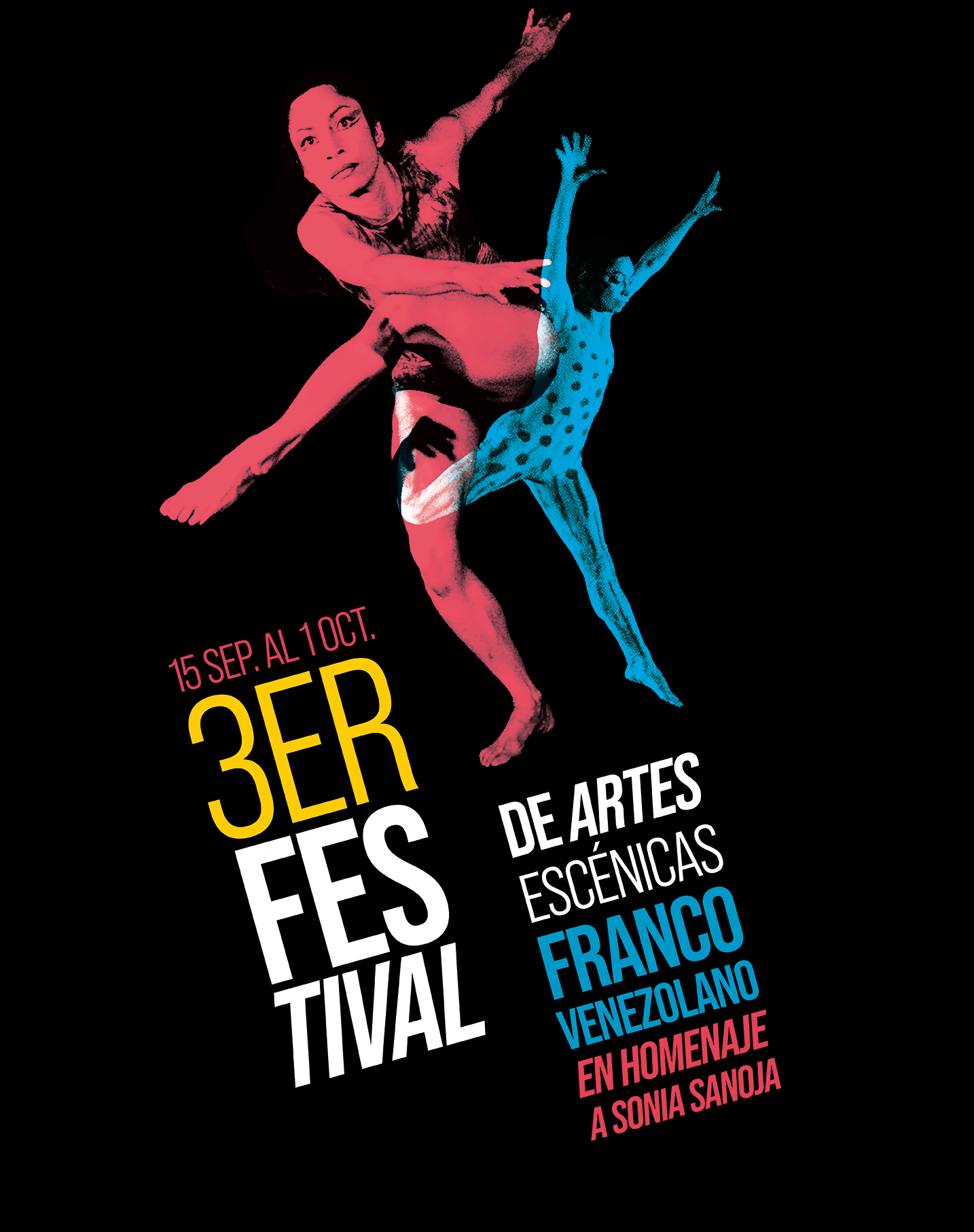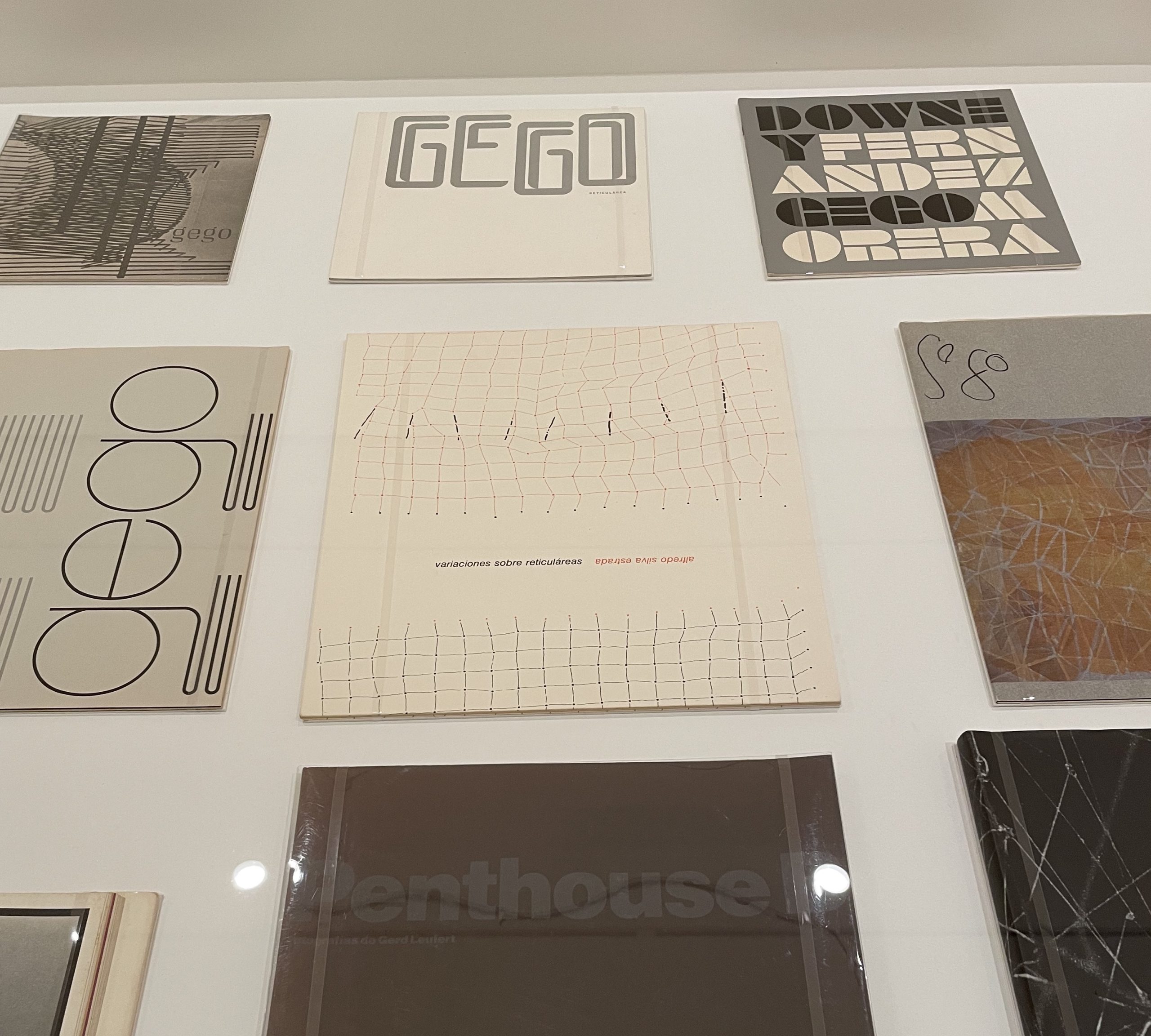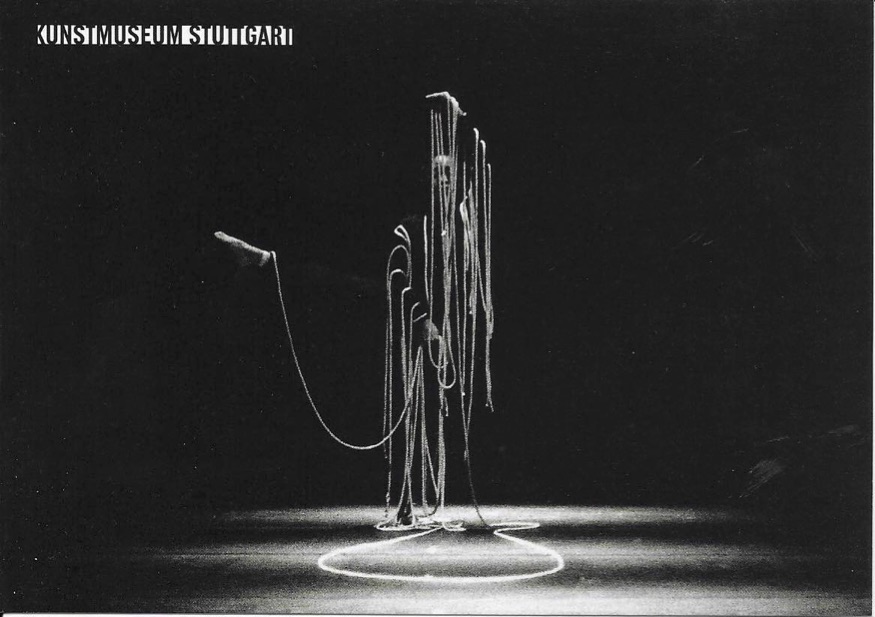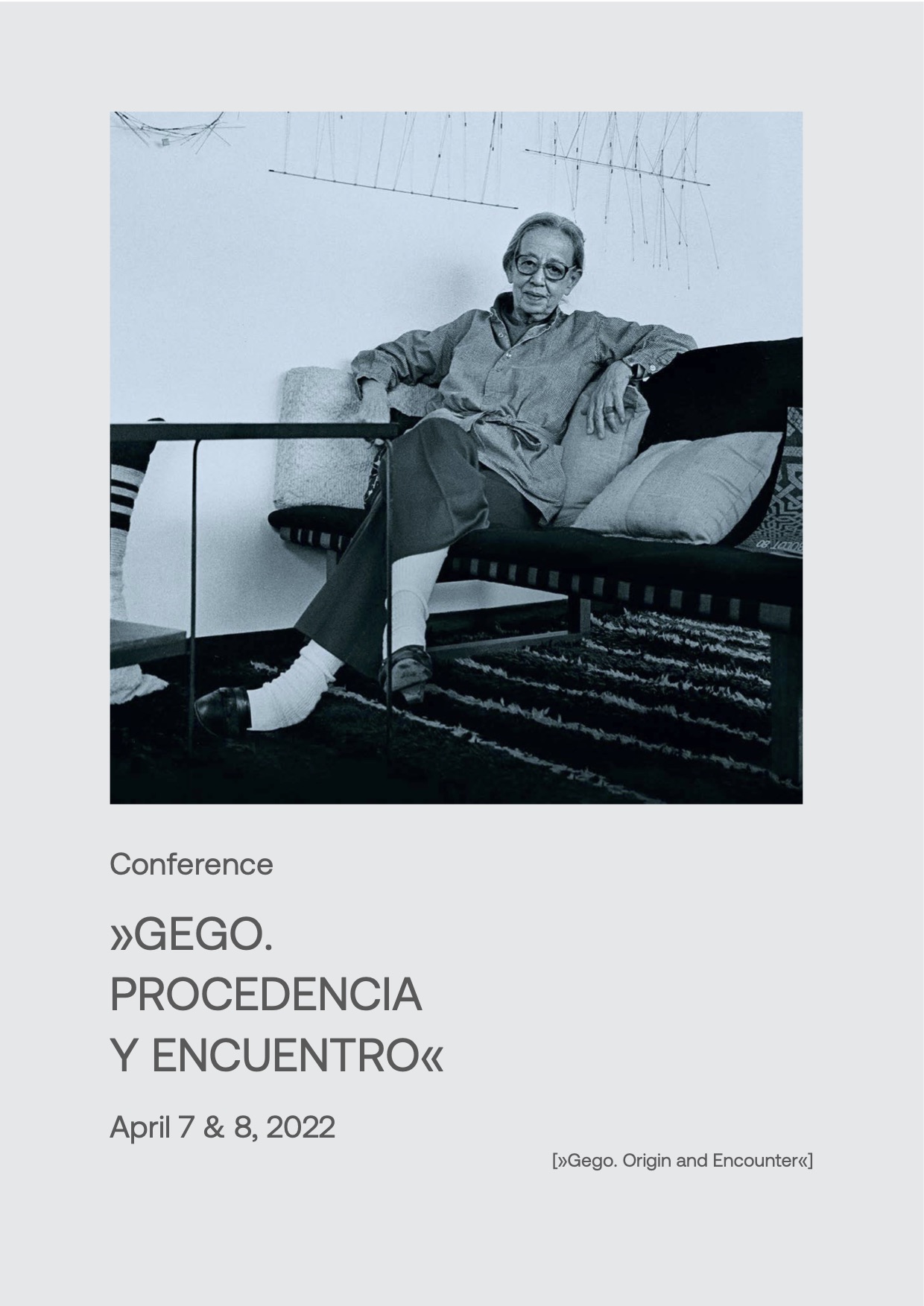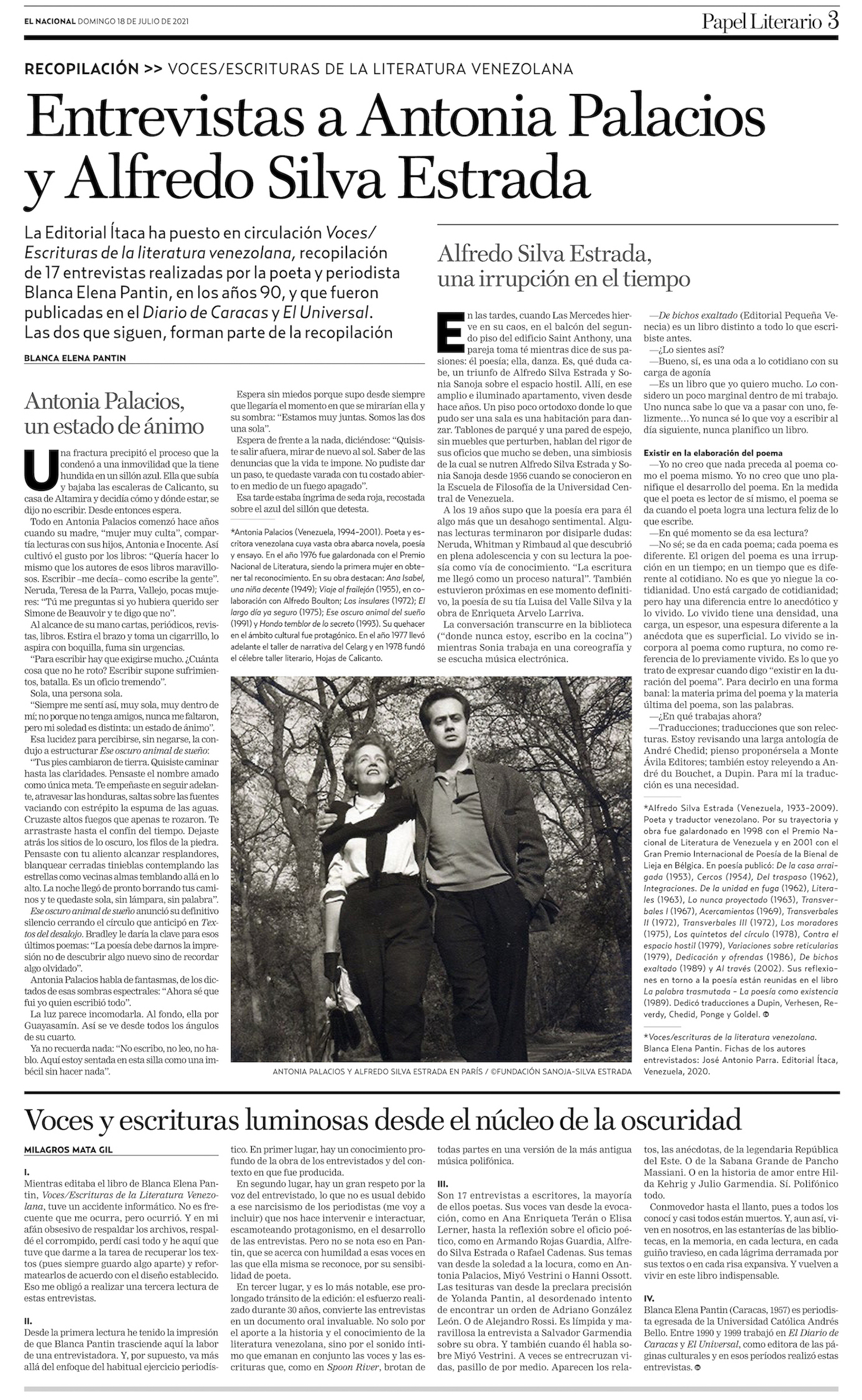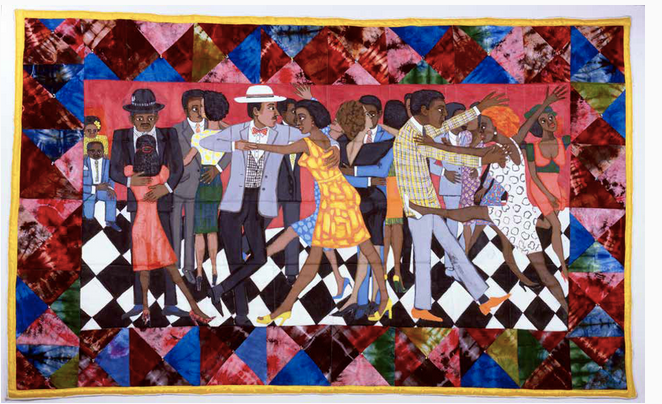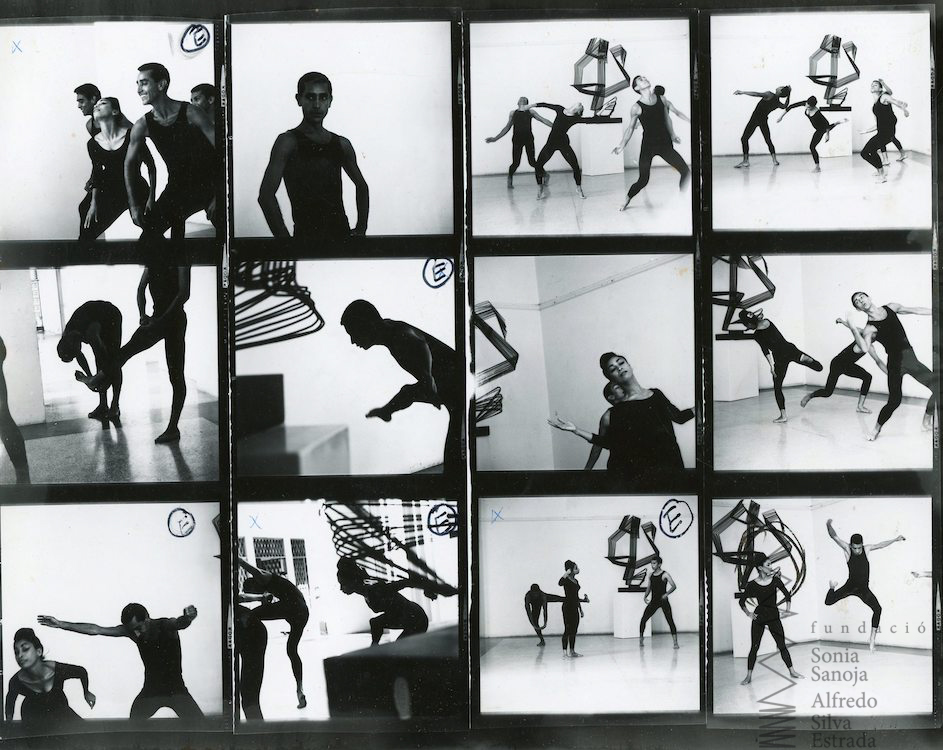NEWS AND EVENTS
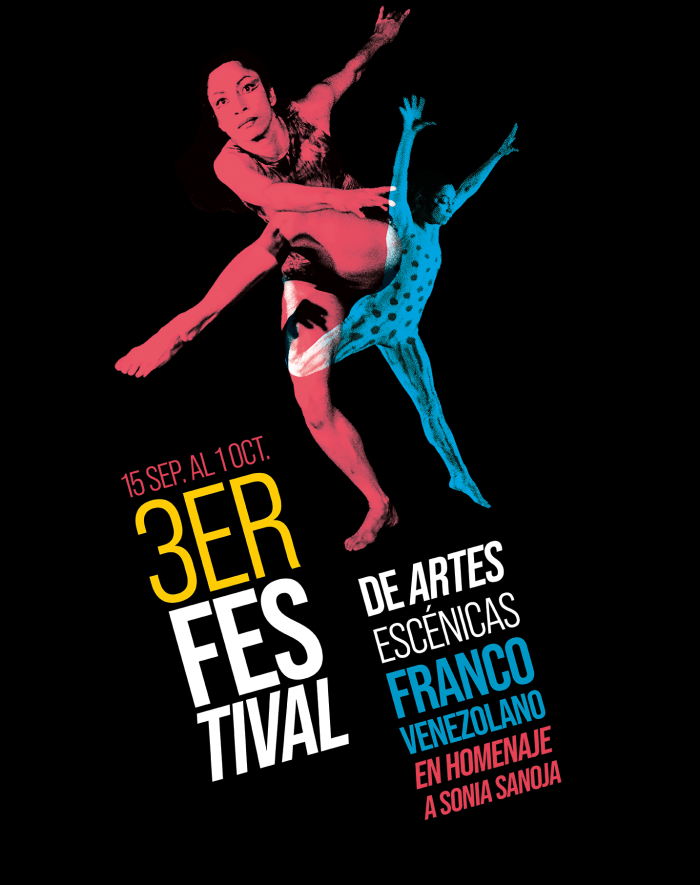


Testimonio de profunda amistad y colaboración artística con Gego, Alfredo Silva Estrada pubicó el poema “Variaciones sobre reticuláreas” (Museo de Arte Contemporáneo de Caracas 1979)
“Escrito en homenaje a Gego con motivo de cumplirse diez años de la realización de Reticulárea (1969), el libro, diseñado por Gerd Leufert, está ilustrado con cinco dibujos de la artista. El poema está dividido en dos partes, cada una compuesta por siete estrofas (o conjunto de estrofas) numeradas del 1 al 7. Escrito en verso libre, comienza con la palabra “reticuláreas”, seguida por frases y metáforas, que se desplazan con sentido dibujístico sobre el espacio de la hoja, nombrando elementos, conceptos y cualidades, tales como aire, libertad de la mano, luz, sombra, nudos y enlaces, sorpresa, líneas, desmesurada red, todas ellas remitiendo al concepto de áreas de redes o “reticuláreas”.”
Centro Internacional de artes de las Américas / Museo de Bellas Artes de Houston
“Variaciones sobre reticuláreas” es exhibido dentro del marco de la exposición “Gego: Midiendo el infinito”, una retrospectiva dedicada a la obra de Gego, que destaca las formas orgánicas, las estructuras lineales, el proceso investigativo de la artista, su evolución y su aproximación a la abstracción.
Museo Jumex de México, bajo la curaduría de Pablo León de la Barra.
15/10/2022 – 05/02/2023
Fotos: Cindy Peña / Asistente curatorial/ Museo JUMEX
Conference Program April 7 & 8 2022. Kunstmuseum Stuttgart
SPEAKERS
Mónica Amor (Maryland Institute College of Art), Noit Banai (Hong Kong Baptist University), Hannia Gómez (Fundación de la Memoria Urbana, Caracas), Hubert Klumpner (ETH Zurich), Pablo León de la Barra (Guggenheim Museum, New York), Sabine Mainberger (University of Bonn), Mari Carmen Ramírez (Museum of Fine Arts, Houston), Stefanie Reisinger (University of Stuttgart), Kerstin Thomas (University of Stuttgart)
PROGRAM APRIL 7
1.30 pm Introduction (Ulrike Groos, Philip Kurz, Kerstin Thomas)
2.00 pm Stefanie Reisinger (University of Stuttgart): Gego in Stuttgart
3.00 pm Hannia Gómez (Fundación de la Memoria Urbana, Caracas): Gego in Caracas
4.00 - 4.45 pm Break
4.45 pm Mónica Amor (Maryland Institute College of Art): Public Intervals
5.45 pm Hubert Klumpner (ETH Zurich): Caracas is Everywhere
6.45 pm Remarks (Stefanie Reisinger)
PROGRAM APRIL 8
10.45 am Opening remarks (Ulrike Groos)
11.00 am Kerstin Thomas (University of Stuttgart): Modernist Questions Towards Form in Stuttgart
12.00 am Noit Banai (Hong Kong Baptist University): Gego. Speaking Exile
1.00 - 2.30 pm Break
2.30 pm Sabine Mainberger (University of Bonn): Dancing Architecture
3.30 pm Performance: Sonia Sanoja, Cuerdas, simple medida (Coreogego), restage 2022
3.45 - 4.15 pm Break
4.15 pm Pablo León de la Barra (Guggenheim Museum, New York): Gego. Tropical Abstraction
5.15 pm Mari Carmen Ramírez (Museum of Fine Arts, Houston): Gego. Finally in Germany
6.15 pm Closing remarks (Stefanie Reisinger)
Times according to the German time zone (UTC+2)
SABINE MAINBERGER »DANCING ARCHITECTURE«
Friday, April 8 at 2.30 pm
ABSTRACT | Dancing Architecture
In Venezuela Gego was in intense exchange with other artists. Her unusual sculptures stimulated poetry, book design, and dance. In 1978, the pioneer of contemporary dance Sonja Sanoja created the performance »Cuerdas, simple medida (Coreogego)«: a work that combines movement, music, language, and architecture. For Sanoja considered dancing constructing. Here, something sculptural and at the same time fluid emerges from her dancing movements. Sabine Mainberger’s lecture will take a closer look at the performance and give some insights into its making, structure, and poetics.
Sabine Mainberger is Professor of Comparative Literature at the University of Bonn, Germany. Her research fields are arts, aesthetics, and anthropology. In recent years, she published books and essays on concepts and functions of lines in Western culture, e.g. (as co-editor) a volume on the issue in philosophy, mathematics, cartography, anthropology, and art theory. Her latest monography focusses on lines, gestures, and books in the work of the francophone writer and artist Henri Michaux.
[post_title] => Gego. Procedencia y Encuentro [post_excerpt] => Gego. Procedencia y Encuentro. Conferencia, Kunstmuseum Stuttgart. [post_status] => publish [comment_status] => open [ping_status] => open [post_password] => [post_name] => gego-procedencia-y-encuentro [to_ping] => [pinged] => [post_modified] => 2023-03-21 14:17:00 [post_modified_gmt] => 2023-03-21 14:17:00 [post_content_filtered] => [post_parent] => 0 [guid] => https://www.sanoja-silvaestrada.org/2022/04/04/gego-procedencia-y-encuentro/ [menu_order] => 0 [post_type] => post [post_mime_type] => [comment_count] => 0 [filter] => raw ) [4] => WP_Post Object ( [ID] => 1869 [post_author] => 3 [post_date] => 2022-03-03 17:57:34 [post_date_gmt] => 2022-03-03 17:57:34 [post_content] =>March 6,8,20,24; April 7,8; May 12,19,21; June 23,30; July 8
Restage
Between February and July 2022, the exhibition Gego. The Architecture of an Artist, at the Kunstmuseum Stuttgart will feature Cuerdas, simple medida (Coreogego), Sonia Sanoja’s iconic choreography, thanks to the close collaboration between the Kunstmuseum and the Fundación Sonia Sanoja - Alfredo Silva Estrada. The restage will be directed by Venezuelan choreographer Claudia Capriles with the participation of dancers from the John Crancko School, Stuttgart.
A curatorship by Stefanie Reisinger, the exhibition is the result of a 3 year research on a body of 100 works by the artist in loan by the Fundación Gego to the Kunstmuseum Stuttgart.
Gego (Getrud Goldschmidt, Hamburg, 1912 - 1994, Caracas) and Sonia Sanoja (Caracas, 1932 – 2017, Caracas) were two emblematic women for the arts in Venezuela and Latin-America. According to Sanoja, their deep friendship stemed from a mutual sharing of their aesthetic and conceptual ideals.
Probably the highest point in the relationship between Sonia Sanoja y Gego can be found at Cuerdas, simple medida (Coreogego), conceived by Sonia Sanoja in 1978. She first presented a series of solos at the opening of Gego’s first solo exhibition at the Museo de Arte Contemporaneo de Caracas in 1977, and then developed that work into a choreography that conveys the most avantgard art of the time in Venezuela. To the aesthetics of Gego and choreography by Sonia Sanoja, were added the poetic voice of Alfredo Silva Estrada (1933-2009) with a fragment of his poem Variaciones sobre Reticuláreas: Homenaje a Gego, together with a musical composition by de Alfredo del Mónaco (1938-2015), pioneer in electronic music in Venezuela.
The choreography Cuerdas, Simple Medida (Coreogego), will be part of the opening of the exhibition on 18/02/2022. The exhibition program include other 12 presentations.
[post_title] => Cuerdas, simple medida (Coreogego) Restage @ Kunstmuseum Stuttgart [post_excerpt] => [post_status] => publish [comment_status] => open [ping_status] => open [post_password] => [post_name] => cuerdas-simple-medida-coreogego-restage-kunstmuseum-stuttgart [to_ping] => [pinged] => [post_modified] => 2023-03-21 14:29:45 [post_modified_gmt] => 2023-03-21 14:29:45 [post_content_filtered] => [post_parent] => 0 [guid] => https://www.sanoja-silvaestrada.org/2022/03/03/cuerdas-simple-medida-coreogego-restage-kunstmuseum-stuttgart/ [menu_order] => 0 [post_type] => post [post_mime_type] => [comment_count] => 0 [filter] => raw ) [5] => WP_Post Object ( [ID] => 1871 [post_author] => 3 [post_date] => 2021-07-17 20:59:13 [post_date_gmt] => 2021-07-17 20:59:13 [post_content] =>Reseña del Papel Literario, domingo 18 de julio de 2021.
Durante los años noventa (ahora nos lucen tan, pero tan lejanos), la poeta y periodista Blanca Elena Pantin realizó entrevistas a escritores venezolanos, que publicó en los diarios El Universal y El Diario de Caracas. Diecisiete de estas entrevistas han sido reunidas en Voces/Escrituras de la literatura venezolana, y han sido publicadas por la Editorial Ítaca (Venezuela, 2021). En la página 3 vienen las correspondientes a Antonia Palacios y a Alfredo Silva Estrada, ilustradas con una imágen donde aparecen ambos poetas caminando en París, incluimos la breve presentación que Milagros Mata Gil hace del libro: “Son 17 entrevistas a escritores, la mayoría de ellos poetas. Sus voces van desde la evocación, como en Ana Enriqueta Terán o Elisa Lerner, hasta la reflexión sobre el oficio poético, como en Armando Rojas Guardia, Alfredo Silva Estrada o Rafael Cadenas. Sus temas van desde la soledad a la locura, como en Antonia Palacios, Miyó Vestrini o Hanni Ossott. Las tesituras van desde la preclara precisión de Yolanda Pantin, al desordenado intento de encontrar un orden de Adriano González León, o de Alejandro Rossi. Es límpida y maravillosa la entrevista a Salvador Garmendia sobre su obra. Y también cuando él habla sobre Miyó Vestrini. A veces se entrecruzan vidas, pasillo de por medio”.
Nelson Rivera
Director de Papel Literario
Carlos Cruz-Diez (Caracas, 1923-París, 2019) fue uno de los artistas abstracto-geométricos más significativos de la segunda mitad del siglo XX, conocido sobre todo por sus Fisicromías, aportes imborrables en la historia del arte occidental y ejemplo contemporáneo de las tensiones que opusieron durante siglos a dibujantes y coloristas, en una querella que fue a la vez técnica, estética y filosófica.
Menos conocida es su producción en el campo del diseño gráfico, donde desempeñó un rol importante en el desarrollo de la industria editorial venezolana, contribuyendo a que pasara de ser una empresa de técnicos (tipógrafos, diagramadores e impresores) a otra donde el diseño añadía la sensibilidad formal y cromática del artista plástico al oficio. La rápida expansión económica de Venezuela, empujada por la industria petrolera, exigía de las empresas editoriales venezolanas un saber en materia de comunicación visual del que carecían. En esos años el diseño gráfico no existía como profesión independiente, y los empresarios buscaron la ayuda de los artistas plásticos, entre ellos Carlos Cruz-Diez. Su caso fue similar al de numerosos artistas en América Latina, como los artistas concretos de Brasil y Argentina Hércules Barsotti y Tomás Maldonado, quienes trabajaron simultáneamente como artistas y diseñadores, gráficos o industriales, apoyándose en las aportaciones de técnicos y artistas europeos, especialmente españoles, italianos y alemanes, tras la Segunda Guerra Mundial.
El trabajo de Carlos Cruz-Diez, tanto en el campo del diseño gráfico como en su obra plástica, está caracterizado por una reflexión —a veces obsesiva— sobre lo que denominamos el peso de la forma. Peso a la vez semántico y estructural, positivo y negativo, liberador y opresivo. Como diseñador, la búsqueda de soluciones sencillas y eficaces se basaba en la coexistencia ordenada y simbiótica de la forma, del color y del contenido; en cambio, en su obra plástica parecía que la forma solo estuviera allí para delimitar un área de interacción cromática que no coartara la naturaleza lumínica e inmaterial del color.
Un amplio trabajo de estudio e introspección llevó a Cruz-Diez a comprender que, en el arte de su tiempo, el color esperaba aún una solución que pusiera en evidencia su naturaleza mutante y lumínica. Los lenguajes que pone en juego para lograrlo, esencialmente la yuxtaposición y superposición de tramas coloreadas, provenían directamente de la imprenta, donde la reproducción de una imagen a color se consigue también por la superposición de cuatro tramas de color con ángulos distintos de inclinación: una amarilla, una magenta, una azul y otra negra.
Esta muestra expone parte de la producción de Carlos Cruz-Diez en el campo del diseño gráfico entre 1930 y 2015 que, esencialmente, desarrolla en tres formatos: diseño editorial, afiches y catálogos de exposiciones.
[post_title] => El Peso de la Forma. El Diseño Gráfico de Carlos Cruz Diez [post_excerpt] => 12 marzo – 11 junio, 2021 / Edificio Nouvel, Biblioteca y Centro de Documentación, Espacio D. Centro Documental, Museo Nacional de Arte Reina Sofia, Madrid. [post_status] => publish [comment_status] => open [ping_status] => open [post_password] => [post_name] => el-peso-de-la-forma-el-diseno-grafico-de-carlos-cruz-diez [to_ping] => [pinged] => [post_modified] => 2023-03-21 14:20:07 [post_modified_gmt] => 2023-03-21 14:20:07 [post_content_filtered] => [post_parent] => 0 [guid] => https://www.sanoja-silvaestrada.org/2021/02/01/el-peso-de-la-forma-el-diseno-grafico-de-carlos-cruz-diez/ [menu_order] => 0 [post_type] => post [post_mime_type] => [comment_count] => 0 [filter] => raw ) [7] => WP_Post Object ( [ID] => 1878 [post_author] => 3 [post_date] => 2020-11-12 12:02:00 [post_date_gmt] => 2020-11-12 12:02:00 [post_content] =>Nos complace anunciar la presentación del libro de Histories of Dance, editado por Julia Bryan-Wilson (UC Berkeley) y coordinado por Olivia Ardui desde el Museo de Arte de Sao Paolo, en el cual ha sido incluida Sonia Sanoja, pionera de la danza contemporánea.
Este proyecto, inicialmente pensado cómo una exposición, tuvo que ser replanteado debido a la pandemia.
Les invitamos a asistir al evento en vivo que tendrá lugar desde UC Berkeley, siguiendo el siguiente link
[post_title] => HISTORIES OF DANCE [post_excerpt] => [post_status] => publish [comment_status] => open [ping_status] => open [post_password] => [post_name] => histories-of-dance [to_ping] => [pinged] => [post_modified] => 2023-03-21 14:34:17 [post_modified_gmt] => 2023-03-21 14:34:17 [post_content_filtered] => [post_parent] => 0 [guid] => https://www.sanoja-silvaestrada.org/2020/11/12/histories-of-dance/ [menu_order] => 0 [post_type] => post [post_mime_type] => [comment_count] => 0 [filter] => raw ) [8] => WP_Post Object ( [ID] => 1880 [post_author] => 1 [post_date] => 2020-09-19 14:34:44 [post_date_gmt] => 2020-09-19 14:34:44 [post_content] =>Basado en la publicación Duraciones Visuales (1967), con textos de Sonia Sanoja, prólogo de Alfredo Silva Estrada, fotografías de Barbara Brandli y diseño de John Lange.
[post_title] => El Libro Danzante [post_excerpt] => [post_status] => publish [comment_status] => open [ping_status] => open [post_password] => [post_name] => el-libro-danzante [to_ping] => [pinged] => [post_modified] => 2023-03-21 14:34:47 [post_modified_gmt] => 2023-03-21 14:34:47 [post_content_filtered] => [post_parent] => 0 [guid] => https://www.sanoja-silvaestrada.org/2020/09/19/el-libro-danzante/ [menu_order] => 0 [post_type] => post [post_mime_type] => [comment_count] => 0 [filter] => raw ) ) [post_count] => 9 [current_post] => -1 [in_the_loop] => [post] => WP_Post Object ( [ID] => 2323 [post_author] => 3 [post_date] => 2023-09-14 19:01:45 [post_date_gmt] => 2023-09-14 19:01:45 [post_content] =>
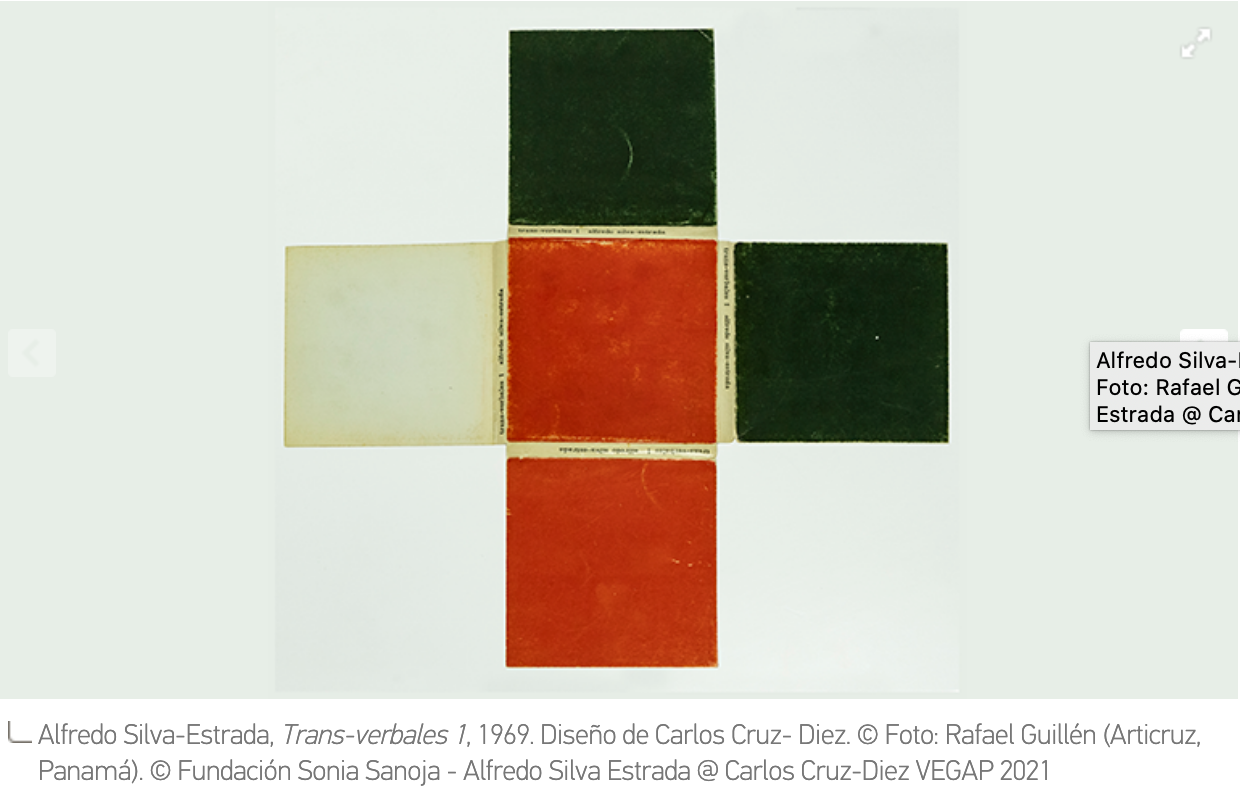
El Peso de la Forma. El Diseño Gráfico de Carlos Cruz Diez
12 marzo – 11 junio, 2021 / Edificio Nouvel, Biblioteca y Centro de Documentación, Espacio D. Centro Documental, Museo Nacional de Arte Reina Sofia, Madrid.
